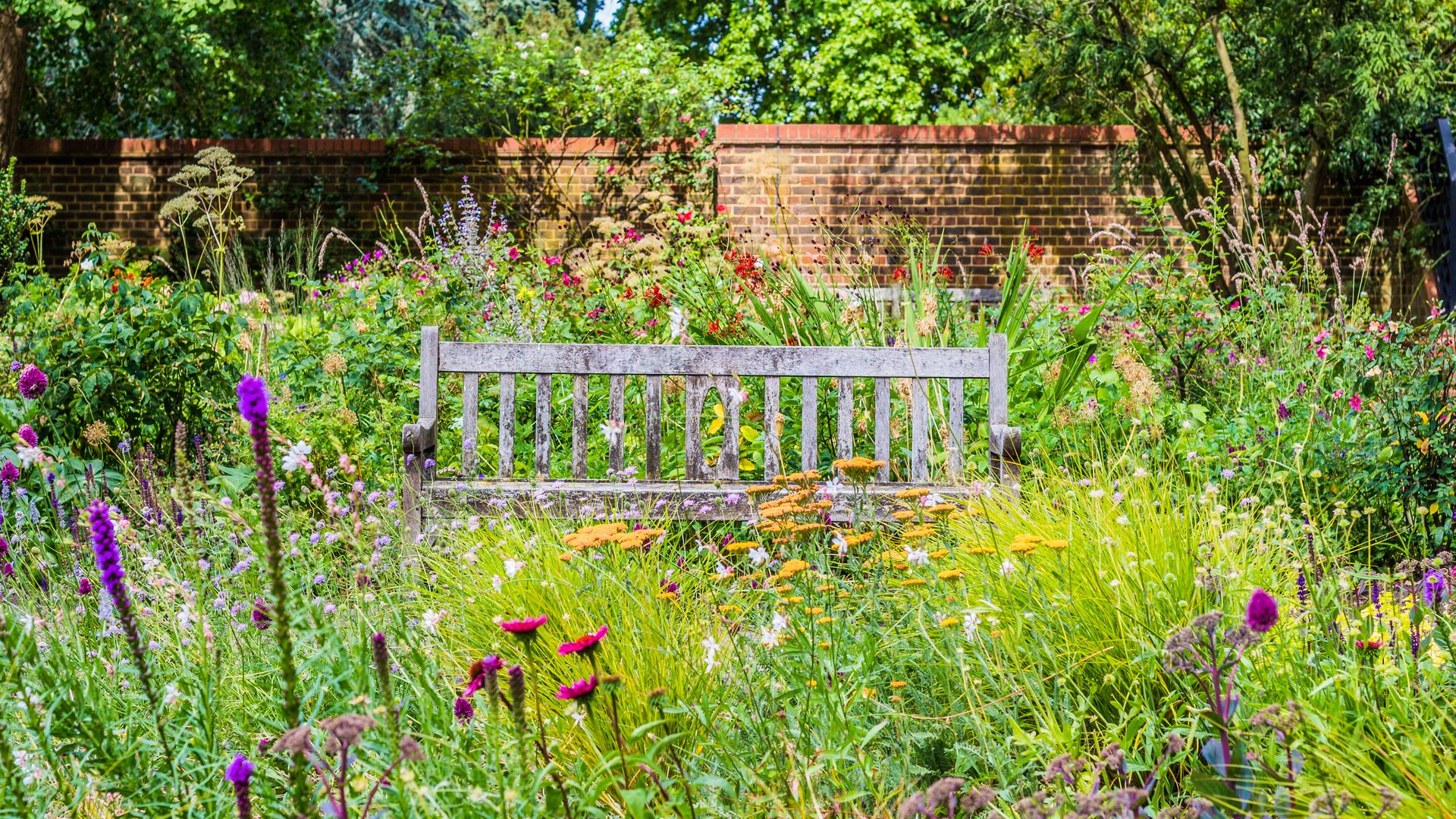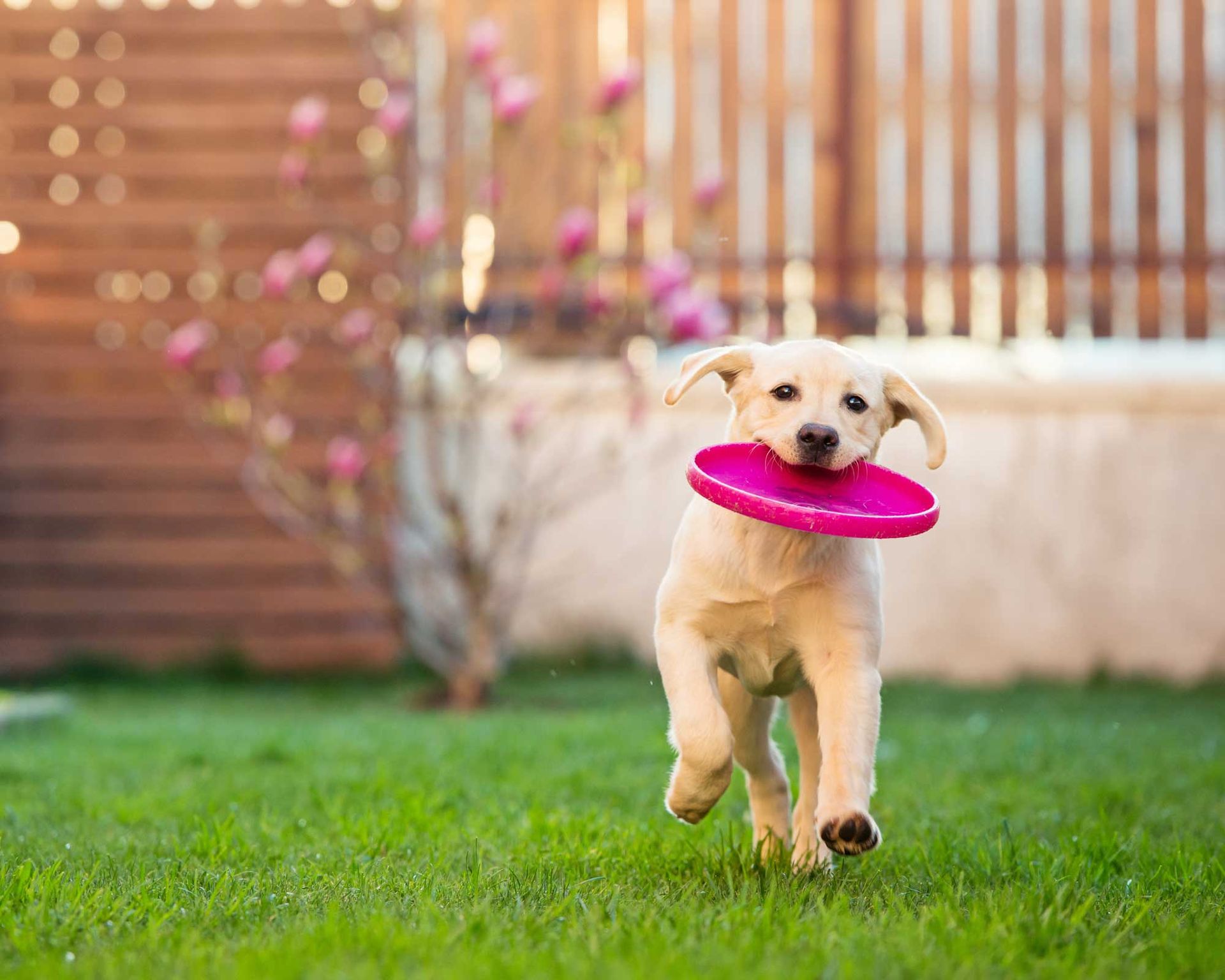6 reasons why artificial grass is anything but low maintenance
Thank you for signing up to Realhomes. You will receive a verification email shortly.
There was a problem. Please refresh the page and try again.
By submitting your information you agree to the Terms & Conditions (opens in new tab) and Privacy Policy (opens in new tab) and are aged 16 or over.
With the messaging to reduce our plastic use so loud and clear, it seems odd that so many are choosing to carpet their gardens with the stuff. Artificial grass, faux lawn, plastic grass – whatever you call it, it has never been so widely used. And homeowners, or renters, who choose to install it, often cite low maintenance as their number one reason.
Now, we know not everyone enjoys mowing the lawn – even with the best lawn mower on hand to help – so we understand why people would want to do away with this regular outdoor chore.
However, the (fake) grass isn’t always greener on the other side. As well as the negative ecological impacts of this landscaping option, a growing number of people are realizing that artificial grass maybe isn’t the fuss-free choice they were sold.
We spotted a tweet from Central Swindon North Council (opens in new tab) in the UK, urging people to think about the possible upkeep of artificial grass before installing it. While not explicit about the volume of complaints, the tweet indicates that in early May the council had received a number of requests to trim trees that dropped blossom and leaves onto neighboring plastic lawns. Of course, they declined to offer this service.
But it got us thinking about the other ways artificial grass actually adds to your to-do list. And if blossom is causing a blight on these homeowners, what other drawbacks of this modern landscaping fad are coming to light?
1. It requires vacuuming, sweeping or washing
While a fake lawn means no mowing, it will need upkeep of a different kind. Anything that lands on it will need removing unless a good gust of wind carries it away. This means sweeping and vacuuming for dry mess and hosing, scrubbing or sponging for anything wet. And you’ll be damned if you think our best vacuum cleaner is being used outside. Who wants the expense of a dedicated ‘backyard vac’ though?
A real lawn handles debris very differently. Fallen leaves and blossom blow away more easily from the surface – a wet artificial lawn is like velcro to blossom on the other hand. If they don’t blow away on a real lawn, they are collected with the next mow or dealt with by the micro-organisms and insects that call your grass home. If not, a carpet of blossom is quite beautiful and only lasts a couple of weeks.
And if like many people, you follow initiatives like No Mow May, or embrace the wild and meadowy look, your lawn probably doesn’t need mowing that often anyway. In fact, we encourage you to try leaving it if you can to let nature flourish.

(Image credit: Lorenza Marzocchi/Getty)
2. It isn’t a no weed guarantee
Even with meticulous installation and heavy-duty weed membrane, where there’s a weed there’s a way. Nobody has told the weeds that they have no place of the barren surface of fake grass. And if they aren’t finding a way to poke through a crevice or join, they will make a home on even the tiniest patches of sediment left on the top. You have to admire their tenacity.

(Image credit: Gingko Leaf Studio)
3. Nearby plants might need more food and water
Your garden is an ecosystem and the presence of one thing can enhance the life of another. Grass does lots of things to its habitat that helps regulate everything from temperature to air quality, and attracts certain species to your outdoor space that will benefit the health of neighboring plant life.
As Dr Mark Gush, Head of Environmental Horticulture at the Royal Horticultural Society (opens in new tab) Notes: ‘Real grass lawns give lots of benefits for the environment, including absorbing carbon dioxide, producing oxygen, cooling the air, and creating a home for wildlife – especially insects. Natural grass and flowers are part of a renewable cycle, so cuttings can be used to make compost, adding nutrients back into the soil. Plastic grass can’t do any of this, and creates a sterile, lifeless area in the garden. Even worse, plastic grass can become extremely hot and it can contaminate the soil below it, which has been shown to harm earthworms.’
As well as not bringing much to the table in terms of biodiversity, the point around temperature shows what else artificial grass takes away. Artificial grass becomes much hotter than natural lawn, increasing the temperature of your garden – even in the shade. Inevitably this leads to very thirsty plants that need lots more water. So the argument that artificial grass requires less water than a lawn, is only true to an extent.

(Image credit: L Feddes/Getty)
4. It needs replacing every decade
We will admit we are impressed by the look of some artificial grass. There are manufacturers who have been able to create a very real look, miles off the lurid green of the school AstroTurf pitches.
However, this ‘authenticity’ comes at a great cost, and no matter how high quality your artificial grass is, it is ultimately a garden carpet and will get damaged over time.
‘Although plastic grass is convenient, it doesn’t last forever. It looks good instantly, but can wear badly and is then very hard to recycle.’ says Chris McIlroy The Grass People (opens in new tab).
In fact, we struggled to find many guarantees above eight years for artificial grass, with one or two claiming as many as 15 years of use. The cost and upheaval is not appealing. And having to get rid of and replace a sheet of plastic the size of a lawn comes at a big cost, both financially and environmentally.
‘It’s such a shame to see lawns being dug up and replaced by plastic alternatives. In a time when we’re all trying to reduce plastic usage, it makes no sense for gardens which are meant to enhance the planet, to be filled with unnecessary and unsightly plastic. Artificial grass is expensive, and not as maintenance-free as people first think as they can get damaged and will ultimately need replacing.’ argues Peter Chaloner, MD of Cobra (opens in new tab).

(Image credit: Amazon)
5. Cleaning up after pets can be tricky
Many artificial grass fans are dog owners who have installed their faux lawn to dissuade playful pups from digging up the grass. However, we know a few dogs for which plastic lawn would be no competition. And worse than that, those who don’t chew, still poo.
You still have to pick pet mess up off a fake lawn, just like a real one. Unlike a real one though, that poop on a hot day, on a very hot plastic lawn can soon become quite the effort to remove. And in bad weather, if the rain gets to the poo before you, think of the germs spreading over the impermeable membrane? Dog dirt can be hard to get off a real lawn from time to time, but at least a good downpour washes it into the earth below.
It isn’t just solids – searches of ‘artificial grass smelling like dog pee’ rocket in the summer months as the pee either dries onto hot grass, embedding the smell, or fails to get washed away. We searched for solutions to this and mostly found products for disinfecting your faux grass after your pet leaves you a present there. Disinfecting the lawn is an added job (and expense) we could do without, thanks.

(Image credit: Getty)
6. It can contribute to flooding
As plastic grass is designed not to let weeds through, it can also be hard for water to get out.
‘Plastic grass also contributes to local flooding as there isn’t any drainage so large volumes of rainwater can be displaced and cause problems elsewhere,’ says McIlroy. By this he means that a good downpour on a natural lawn or meadow will largely go unnoticed as it seeps into the earth straight away. With artificial grass, it pools just as it would on concrete or tarmac, looking for somewhere to go.
This can be annoying in your own backyard, but if a whole neighborhood uses plastic grass, that is a lot of run-off for local drains to deal with. Cue flooded streets (and possibly houses).
So what low-maintenance lawn alternatives can we use instead?
We know that a real grass lawn isn’t suitable for everyone. If you really don’t want the have to mow it, or don’t want to let it evolve into a wildflower meadow instead, you are probably right to pass on the grass.
However, there are lots of alternatives to lawn that can still maintain the biodiversity of your outdoor space and don’t involve covering your yard in something that is considered bad for the planet. Moreover, lawns are quite thirsty and in some habitats, they just don’t make sense. This is why we are big fans of the concept of xeriscaping which is well suited to regions such as California or New Mexico. Coming from the Greek word ‘xeros’ meaning dry, it is a landscaping method that demands little to no water which is great news for busy people and drought-stricken areas.
If you live in a more temperate climate, consider using gravel to cover expanses that may have been used for lawn. It offers good drainage and you can either plant it with low-maintenance herbs and succulents, or give container gardening a go and fill the space with potted plants. These will need watering, so choose species that can withstand a little neglect and don’t need as much water to keep it easy and sustainable.
Another idea is resin-bound gravel that is permeable, but easier for those with mobility issues or wheelchair users to move on than normal gravel. Artfully placed planters or raised beds can be used throughout the space to give nature a home and add interest.
So, remember that faking it isn’t the only alternative to laying real sod in your yard.


Comments are closed.